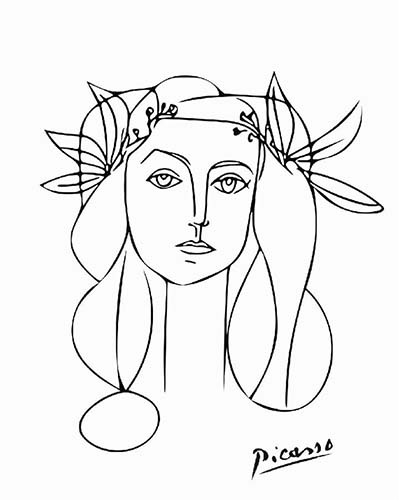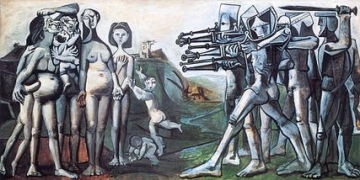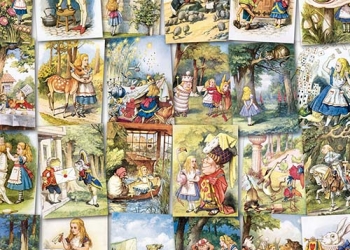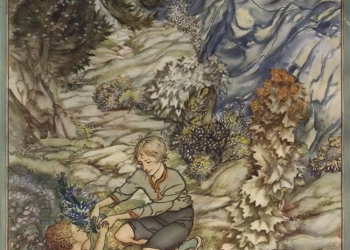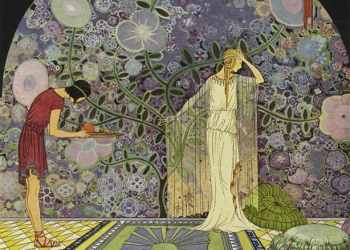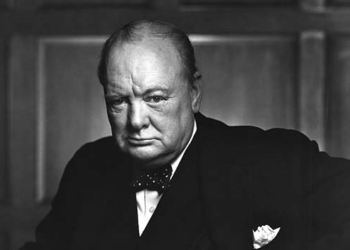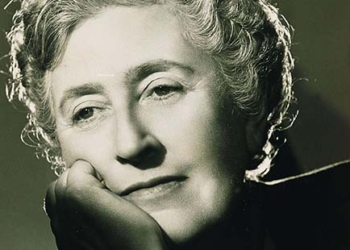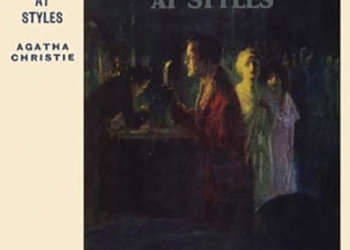Pablo Picasso [1940] - Autoportrait 1 [art, paintings]
Pablo Picasso [1940] - Autoportrait 2 [art, paintings]
Pablo Picasso [1940] - Buste de femme 1 [art, paintings]
Pablo Picasso [1940] - Buste de femme 2 [art, paintings]
Pablo Picasso [1940] - Buste de femme 3 [art, paintings]
Pablo Picasso [1940] - Buste de femme 4 [art, paintings]
Pablo Picasso [1940] - Buste de figure feminine 1 [art, paintings]
Pablo Picasso [1940] - Buste de figure feminine [art, paintings]
Pablo Picasso [1940] - Cafe a Royan [Le cafe] [art, paintings]
Pablo Picasso [1940] - Etreinte [art, paintings]
Pablo Picasso [1940] - Femme assise aux bras leves 1 [art, paintings]
Pablo Picasso [1940] - Femme assise dans un fauteuil 1 [art, paintings]
Pablo Picasso [1940] - Femme assise dans un fauteuil 2 [art, paintings]
Pablo Picasso [1940] - Femme assise dans un fauteuil 3 [art, paintings]
Pablo Picasso [1940] - Femme assise dans un fauteuil 4 [art, paintings]
Pablo Picasso [1940] - Femme assise dans un fauteuil 5 [art, paintings]
Pablo Picasso [1940] - Femme dans un fauteuil [art, paintings]
Pablo Picasso [1940] - Femme se reposant [art, paintings]
Pablo Picasso [1940] - L'atelier- nu debout et Buste de femme [art, paintings]
Pablo Picasso [1940] - L'eboueur [art, paintings]
Pablo Picasso [1940] - Le chapeau a fleurs [Buste de femme] [art, paintings]
Pablo Picasso [1940] - Nature morte aux poissons [art, paintings]
Pablo Picasso [1940] - Nu assis aux bras leves [art, paintings]
Pablo Picasso [1940] - Nu assis [art, paintings]
Pablo Picasso [1940] - Tete d'un homme barbu [art, paintings]
Pablo Picasso [1940] - silhouette de picasso et jeune fille en pleurs [art, paintings]
Pablo Picasso [1941] - Buste de femme (Dora Maar) [art, paintings]
Pablo Picasso [1941] - Buste de femme (Portrait de Dora Maar) [art, paintings]
Pablo Picasso [1941] - Buste de femme au chapeau [art, paintings]
Pablo Picasso [1941] - Buste de femme [art, paintings]
Pablo Picasso [1941] - Deux femmes nues [art, paintings]
Pablo Picasso [1941] - Dora Maar au chat [art, paintings]
Pablo Picasso [1941] - Femme a l'artichaut [art, paintings]
Pablo Picasso [1941] - Femme a la collerette bleue (Portrait d'Inez) [art, paintings]
Pablo Picasso [1941] - Femme assise a l'abecedaire [art, paintings]
Pablo Picasso [1941] - Femme assise dans un fauteuil 1 [art, paintings]
Pablo Picasso [1941] - Femme assise dans un fauteuil 2 [art, paintings]
Pablo Picasso [1941] - Femme assise dans un fauteuil 3 [art, paintings]
Pablo Picasso [1941] - Femme assise dans un fauteuil 4 [art, paintings]
Pablo Picasso [1941] - Femme assise dans un fauteuil 5 [art, paintings]
Pablo Picasso [1941] - Femme assise dans un fauteuil [art, paintings]
Pablo Picasso [1941] - Femme assise [art, paintings]
Pablo Picasso [1941] - Femme au chapeau assise dans un fauteuil (Dora Maar) [art, paintings]
Pablo Picasso [1941] - Femme au chapeau vert et broche [art, paintings]
Pablo Picasso [1941] - Femme au corsage bleu [art, paintings]
Pablo Picasso [1941] - Femme dans un fauteuil [art, paintings]
Pablo Picasso [1941] - Femme en gris et blanc [art, paintings]
Pablo Picasso [1941] - Femme et cage a oiseaux pres de la fenetre [art, paintings]
Pablo Picasso [1941] - Femme nue couchee [art, paintings]
Pablo Picasso [1941] - Jeune garcon a la langouste [art, paintings]
Pablo Picasso [1941] - Madame Paul Eluard [Portrait de Nusch] [art, paintings]
Pablo Picasso [1941] - Nature morte 1 [art, paintings]
Pablo Picasso [1941] - Nature morte 2 [art, paintings]
Pablo Picasso [1941] - Nature morte 3 [art, paintings]
Pablo Picasso [1941] - Nature morte avec boudin [art, paintings]
Pablo Picasso [1941] - Nature morte avec pigeon [art, paintings]
Pablo Picasso [1941] - Nu [art, paintings]
Pablo Picasso [1941] - Portrait de Mademoiselle Aubrey [art, paintings]
Pablo Picasso [1941] - Tete de femme (Dora) [art, paintings]
Pablo Picasso [1941] - Tete de femme [art, paintings]
Pablo Picasso [1942] - Buste de femme (Dora Maar) [art, paintings]
Pablo Picasso [1942] - Buste de femme au chapeau a fleurs [art, paintings]
Pablo Picasso [1942] - Chaise [art, paintings]
Pablo Picasso [1942] - Femme a chapeau assise dans un fauteuil [art, paintings]
Pablo Picasso [1942] - Femme assise au chapeau-poisson [art, paintings]
Pablo Picasso [1942] - Femme assise au petit chapeau rond [art, paintings]
Pablo Picasso [1942] - Femme assise [art, paintings]
Pablo Picasso [1942] - Femme au corsage de satin (Portrait de Dora Maar) [art, paintings]
Pablo Picasso [1942] - Femme en gris [art, paintings]
Pablo Picasso [1942] - Figure d'homme [Sculpteur] [art, paintings]
Pablo Picasso [1942] - L'aubade (Trois femmes nues) [etude] [art, paintings]
Pablo Picasso [1942] - L'aubade [La serenade - Nu couche et musicienne assise] [art, paintings]
Pablo Picasso [1942] - Le lavabo [art, paintings]
Pablo Picasso [1942] - Nature morte a la guitare [art, paintings]
Pablo Picasso [1942] - Nature morte au panier de fruits [art, paintings]
Pablo Picasso [1942] - Nature morte avec crane de boeuf [art, paintings]
Pablo Picasso [1942] - Nature morte [art, paintings]
Pablo Picasso [1942] - Nu couche [art, paintings]
Pablo Picasso [1942] - Nus masculins [art, paintings]
Pablo Picasso [1942] - Pichet de fleurs sur une table [art, paintings]
Pablo Picasso [1942] - Portrait de Dora Maar 1 [art, paintings]
Pablo Picasso [1942] - Portrait de Dora Maar 2 [art, paintings]
Pablo Picasso [1942] - Tete de taureau sur une table [art, paintings]
Pablo Picasso [1942] - Tete pour La femme en robe longue [art, paintings]
Pablo Picasso [1942] - Tete [art, paintings]
Pablo Picasso [1943] - Atelier de l'artiste, rue des Grands Augustins [art, paintings]
Pablo Picasso [1943] - Buffet (Nature morte aux verres et aux cerises) [art, paintings]
Pablo Picasso [1943] - Buste de femme R [art, paintings]
Pablo Picasso [1943] - Buste de femme au chapeau [art, paintings]
Pablo Picasso [1943] - Buste de femme [art, paintings]
Pablo Picasso [1943] - Cafetiere 1 [art, paintings]
Pablo Picasso [1943] - Cafetiere [art, paintings]
Pablo Picasso [1943] - Couple sur un banc R [art, paintings]
Pablo Picasso [1943] - Femme assie a la robe grise [art, paintings]
Pablo Picasso [1943] - Femme en bleu [Femme assise] [art, paintings]
Pablo Picasso [1943] - Femme en vert (Dora Maar) [art, paintings]
Pablo Picasso [1943] - Grand nu couche [art, paintings]
Pablo Picasso [1943] - Homme endormi et femme assise [art, paintings]
Pablo Picasso [1943] - L'enfant aux colombes [art, paintings]
Pablo Picasso [1943] - L'homme au mouton [etude] [art, paintings]
Pablo Picasso [1943] - Le Vert-Galant [art, paintings]
Pablo Picasso [1943] - Le buffet du 'Catalan' 1 [art, paintings]
Pablo Picasso [1943] - Le buffet du 'Catalan' R2 [art, paintings]
Pablo Picasso [1943] - Le rocking-chair [art, paintings]
Pablo Picasso [1943] - Maya dans ses cheveux une poupee en tissu [art, paintings]
Pablo Picasso [1943] - Nature morte a la cruche et au verre [Verre et pichet] [art, paintings]
Pablo Picasso [1943] - Nature morte au compotier [art, paintings]
Pablo Picasso [1943] - Nature morte au crane et au pot 1 [art, paintings]
Pablo Picasso [1943] - Nature morte au crane et au pot 2 [art, paintings]
Pablo Picasso [1943] - Nature morte au gruyere [art, paintings]
Pablo Picasso [1943] - Nature morte [art, paintings]
Pablo Picasso [1943] - Portrait de Dora Maar 1 [art, paintings]
Pablo Picasso [1943] - Portrait de Dora Maar [art, paintings]
Pablo Picasso [1943] - Portrait de femme (Dora Maar) [art, paintings]
Pablo Picasso [1943] - Premiers pas [art, paintings]
Pablo Picasso [1943] - Tete de femme brune [Profil de femme] [art, paintings]
Pablo Picasso [1943] - Tete de femme [art, paintings]
Pablo Picasso [1943] - Tete [art, paintings]
Pablo Picasso [1943] - Vase de fleurs et compotier 1 [art, paintings]
Pablo Picasso [1943] - Vase de fleurs et compotier [art, paintings]
Pablo Picasso [1943] - Vase de fleurs [art, paintings]
Pablo Picasso [1943] - non vouloir [art, paintings]
Pablo Picasso [1944] - 'Vert Galant' [art, paintings]
Pablo Picasso [1944] - Arbres [etudes] [art, paintings]
Pablo Picasso [1944] - Bacchanales- Triomphe de Pan d'apres Poussin [art, paintings]
Pablo Picasso [1944] - Buste de femme 1 [art, paintings]
Pablo Picasso [1944] - Buste de femme au chapeau bleubis [art, paintings]
Pablo Picasso [1944] - Carafe et plant de tomate 1 [art, paintings]
Pablo Picasso [1944] - Carafe et plant de tomate [art, paintings]
Pablo Picasso [1944] - Coq de la liberation [art, paintings]
Pablo Picasso [1944] - Femme a la broche en tete de sphinx [art, paintings]
Pablo Picasso [1944] - Femme assise dans un fauteuil [art, paintings]
Pablo Picasso [1944] - Femme couchee et femme qui se lave le pied [art, paintings]
Pablo Picasso [1944] - Femme en bleu [art, paintings]
Pablo Picasso [1944] - Femme en vert [art, paintings]
Pablo Picasso [1944] - Femme se lavant le pied 1 [art, paintings]
Pablo Picasso [1944] - La cafetiere bleue (Cafetiere et tasse) [art, paintings]
Pablo Picasso [1944] - Le charnier [art, paintings]
Pablo Picasso [1944] - Maternite ('Vert Galant') [art, paintings]
Pablo Picasso [1944] - Nature morte au bougeoir R1 [art, paintings]
Pablo Picasso [1944] - Nature morte au fromage [art, paintings]
Pablo Picasso [1944] - Nature morte [art, paintings]
Pablo Picasso [1944] - Notre-Dame 1 [art, paintings]
Pablo Picasso [1944] - Notre-Dame 2 [art, paintings]
Pablo Picasso [1944] - Notre-Dame [art, paintings]
Pablo Picasso [1944] - Nu au divan [Femme couchee] [art, paintings]
Pablo Picasso [1944] - Plant de tomates [art, paintings]
Pablo Picasso [1944] - Portrait de femme (Francoise Gilot) 2 [art, paintings]
Pablo Picasso [1944] - Portrait de femme (Francoise Gilot) [art, paintings]
Pablo Picasso [1944] - Portrait de femme (Marie-Therese) [art, paintings]
Pablo Picasso [1944] - Portrait de femme au fauteuil [art, paintings]
Pablo Picasso [1944] - Tete de femme [art, paintings]
Pablo Picasso [1944] - Tete de jeune garcon [art, paintings]
Pablo Picasso [1944] - Verre et fruits [art, paintings]
Pablo Picasso [1944] - Verre et pichet 2 [art, paintings]
Pablo Picasso [1944] - Verre et pichet [art, paintings]
Pablo Picasso [1945] - Composition et volumes [art, paintings]
Pablo Picasso [1945] - Crane de chevre, bouteille et bougie [art, paintings]
Pablo Picasso [1945] - Crane et pichet [art, paintings]
Pablo Picasso [1945] - Enfant a la fleur [art, paintings]
Pablo Picasso [1945] - Faune flutiste et danseuse a la maraca et au tambourin [art, paintings]
Pablo Picasso [1945] - Femme assise au chapeau plat [art, paintings]
Pablo Picasso [1945] - Femme debout [art, paintings]
Pablo Picasso [1945] - Femme en gris [art, paintings]
Pablo Picasso [1945] - Figure (dora Maar) [art, paintings]
Pablo Picasso [1945] - Ines [art, paintings]
Pablo Picasso [1945] - Le homard [art, paintings]
Pablo Picasso [1945] - Monument aux espagnols morts pour la France [art, paintings]
Pablo Picasso [1945] - Nature morte a la pomme [art, paintings]
Pablo Picasso [1945] - Pichet et bougeoir 1 [art, paintings]
Pablo Picasso [1945] - Pichet et bougeoir 2 [art, paintings]
Pablo Picasso [1945] - Pichet et squelette [art, paintings]
Pablo Picasso [1945] - Pichet, bougeoir et casserole emaillee [art, paintings]
Pablo Picasso [1945] - Pitcher, Candle and Casserole [art, paintings]
Pablo Picasso [1945] - Poireaux, crane et pichet 1 [art, paintings]
Pablo Picasso [1945] - Poireaux, crane et pichet 2 [art, paintings]
Pablo Picasso [1945] - Poireaux, crane et pichet 3 [art, paintings]
Pablo Picasso [1945] - Poireaux, crane et pichet 4 [art, paintings]
Pablo Picasso [1945] - Poireaux, crane, lampe et vase [art, paintings]
Pablo Picasso [1945] - Poireaux, tete de poisson crane et pichet [art, paintings]
Pablo Picasso [1945] - Portrait de Paul Langevin [art, paintings]
Pablo Picasso [1945] - Tasse, verre et cafetiere [art, paintings]
Pablo Picasso [1945] - Tete de femme (Francoise Gilot) 1 [art, paintings]
Pablo Picasso [1945] - Tete de femme (Francoise Gilot) 3 [art, paintings]
Pablo Picasso [1945] - Tete de femme 2 [art, paintings]
Pablo Picasso [1945] - Tete de femme [art, paintings]
Pablo Picasso [1945] - Tete de jeune fille VI [art, paintings]
Pablo Picasso [1945] - Tete de jeune fille aux cheveux longs II [art, paintings]
Pablo Picasso [1945] - Tete de jeune fille aux grands cheveux VI [art, paintings]
Pablo Picasso [1945] - Vue de Notre-Dame de Paris - +le de la Cite [art, paintings]
Pablo Picasso [1945] - Vue de Notre-Dame de Paris 2 [art, paintings]
Pablo Picasso [1945] - Vue de Notre-Dame de Paris [art, paintings]
Pablo Picasso [1946] - Buste de Francoise [art, paintings]
Pablo Picasso [1946] - Buste de femme (Francoise Gilot) [art, paintings]
Pablo Picasso [1946] - Chouette dans un interieur [art, paintings]
Pablo Picasso [1946] - Citron, poisson, aubergine [art, paintings]
Pablo Picasso [1946] - Composition [art, paintings]
Pablo Picasso [1946] - Crane et pichet [art, paintings]
Pablo Picasso [1946] - Crane, oursins et lampe sur une table 1 [art, paintings]
Pablo Picasso [1946] - Faune jaune et bleu jouant de la diaule [art, paintings]
Pablo Picasso [1946] - Femme a la robe verte [art, paintings]
Pablo Picasso [1946] - Femme allongee [art, paintings]
Pablo Picasso [1946] - Femme assise [art, paintings]
Pablo Picasso [1946] - Femme au collier jaune [art, paintings]
Pablo Picasso [1946] - Femme dans un fauteuil (Francoise GIlot) [art, paintings]
Pablo Picasso [1946] - Femme dans un fauteuil [Figure] [art, paintings]
Pablo Picasso [1946] - Femme dans un fauteuil [art, paintings]
Pablo Picasso [1946] - Femme debout [art, paintings]
Pablo Picasso [1946] - Femme nue couchee [art, paintings]
Pablo Picasso [1946] - Femme nue sur un canape [art, paintings]
Pablo Picasso [1946] - Francoise 1 [art, paintings]
Pablo Picasso [1946] - Francoise [art, paintings]
Pablo Picasso [1946] - Gobeurs d'oursins [art, paintings]
Pablo Picasso [1946] - Hibou et fleche [art, paintings]
Pablo Picasso [1946] - Huit silhouettes [art, paintings]
Pablo Picasso [1946] - L'aiguiere etoilee [art, paintings]
Pablo Picasso [1946] - La femme-fleur (Francoise GIlot) [art, paintings]
Pablo Picasso [1946] - La femme-fleur (Francoise Gilot) 1 [art, paintings]
Pablo Picasso [1946] - La femme-fleur (Francoise Gilot) 2 [art, paintings]
Pablo Picasso [1946] - La joie de vivre (Pastorale) [art, paintings]
Pablo Picasso [1946] - Le faune a moustache [art, paintings]
Pablo Picasso [1946] - Le viol d'Europe [art, paintings]
Pablo Picasso [1946] - Les deux femmes nues III (1945) [art, paintings]
Pablo Picasso [1946] - Les deux femmes nues IX [art, paintings]
Pablo Picasso [1946] - Les deux femmes nues V [art, paintings]
Pablo Picasso [1946] - Les deux femmes nues VII [art, paintings]
Pablo Picasso [1946] - Les deux femmes nues XV [art, paintings]
Pablo Picasso [1946] - Les deux femmes nues XVI [art, paintings]
Pablo Picasso [1946] - Nature morte a la chouette et aux trois oursins [art, paintings]
Pablo Picasso [1946] - Nu assis [art, paintings]
Pablo Picasso [1946] - Nu debout (Francoise) [art, paintings]
Pablo Picasso [1946] - Pecheur assis a la casquette [art, paintings]
Pablo Picasso [1946] - Pecheur oisif [art, paintings]
Pablo Picasso [1946] - Portrait de Francoise 1 [art, paintings]
Pablo Picasso [1946] - Portrait de Francoise 2 [art, paintings]
Pablo Picasso [1946] - Portrait de Francoise 3 [art, paintings]
Pablo Picasso [1946] - Portrait de Francoise Gilot [art, paintings]
Pablo Picasso [1946] - Portrait de Francoise au long cou I [art, paintings]
Pablo Picasso [1946] - Portrait de Francoise avec la faucille et le marteau [art, paintings]
Pablo Picasso [1946] - Tete de faune vert [art, paintings]
Pablo Picasso [1946] - Tete de femme (Francoise Gilot) [art, paintings]
Pablo Picasso [1946] - Tete de femme (Francoise) [art, paintings]
Pablo Picasso [1946] - Tete de femme aux boucles vertes [art, paintings]
Pablo Picasso [1946] - Tete de femme [art, paintings]
Pablo Picasso [1946] - Tete de mort et livre [art, paintings]
Pablo Picasso [1946] - crane et livre ( tete de mort et livre) [art, paintings]
Pablo Picasso [1946] - crane sur une chaise [art, paintings]
Pablo Picasso [1946] - crane, livre et lampe a petrole [art, paintings]
Pablo Picasso [1947] - Bebe avec un noeud papillon dans les cheveux [art, paintings]
Pablo Picasso [1947] - Cage avec chouette [art, paintings]
Pablo Picasso [1947] - Centaure et bacchante [art, paintings]
Pablo Picasso [1947] - Composition au vase de fleurs [art, paintings]
Pablo Picasso [1947] - Composition en trois couleurs [art, paintings]
Pablo Picasso [1947] - Composition patriotique [art, paintings]
Pablo Picasso [1947] - Femme assise [art, paintings]
Pablo Picasso [1947] - Femme au chapeau 1 [art, paintings]
Pablo Picasso [1947] - Femme au chapeau vert [art, paintings]
Pablo Picasso [1947] - Femme au chapeau [art, paintings]
Pablo Picasso [1947] - Femme dans un fauteuil [art, paintings]
Pablo Picasso [1947] - Femme en vert et mauve [art, paintings]
Pablo Picasso [1947] - Hibou a la chaise sur fond ocre [art, paintings]
Pablo Picasso [1947] - Hibou sur une chaise 2 [art, paintings]
Pablo Picasso [1947] - Hibou sur une chaise [art, paintings]
Pablo Picasso [1947] - Jeune enfant au seau [art, paintings]
Pablo Picasso [1947] - La dormeuse [art, paintings]
Pablo Picasso [1947] - La fille du concierge tenant une poupee [art, paintings]
Pablo Picasso [1947] - Les cerises [art, paintings]
Pablo Picasso [1947] - Nature morte a la cafetiere [art, paintings]
Pablo Picasso [1947] - Nature morte au compotier et a la cafetiere [art, paintings]
Pablo Picasso [1947] - Nature morte au coq et au couteau [art, paintings]
Pablo Picasso [1947] - Nature morte sur une table [art, paintings]
Pablo Picasso [1947] - Nature morte, crane et oursins [art, paintings]
Pablo Picasso [1947] - Nature morte, table et cafetiere gris fonce [art, paintings]
Pablo Picasso [1947] - Nature morte [art, paintings]
Pablo Picasso [1947] - Pigeon sur fond gris [art, paintings]
Pablo Picasso [1947] - Portrait de Florence Loeb [art, paintings]
Pablo Picasso [1947] - Portrait de Francoise aux cheveux flous [art, paintings]
Pablo Picasso [1947] - Portrait de Francoise [art, paintings]
Pablo Picasso [1947] - Tete a la coiffe [art, paintings]
Pablo Picasso [1947] - Tete de femme [art, paintings]
Pablo Picasso [1947] - Ulysse et les sirenes [art, paintings]
Pablo Picasso [1947] - Vierge a l'enfant [art, paintings]
Pablo Picasso [1947] - Visage gris fonce au chapeau blanc [art, paintings]
Pablo Picasso [1947] - Visage [art, paintings]
Pablo Picasso [1947] - Volaille et couteau sur une table [art, paintings]
Pablo Picasso [1948] - Centaure dansant sur fond noir [art, paintings]
Pablo Picasso [1948] - Claude a la balle [art, paintings]
Pablo Picasso [1948] - Claude dans les bras de sa mere [art, paintings]
Pablo Picasso [1948] - Claude en costume polonais [art, paintings]
Pablo Picasso [1948] - Femme dans un fauteuil I [art, paintings]
Pablo Picasso [1948] - Femme dans un fauteuil II [art, paintings]
Pablo Picasso [1948] - Femme dans un fauteuil [art, paintings]
Pablo Picasso [1948] - Femme dans un fauteuil1 [art, paintings]
Pablo Picasso [1948] - Femme dans un fauteuil2 [art, paintings]
Pablo Picasso [1948] - La cuisine 1 [art, paintings]
Pablo Picasso [1948] - La cuisine [art, paintings]
Pablo Picasso [1948] - La femme au fauteuil I (IX) [art, paintings]
Pablo Picasso [1948] - Lastre decore d'une tete de femme [art, paintings]
Pablo Picasso [1948] - Le grand hibou [art, paintings]
Pablo Picasso [1948] - Le grand homard rouge [art, paintings]
Pablo Picasso [1948] - Nature morte aux figues [art, paintings]
Pablo Picasso [1948] - Vue de la fenetre [art, paintings]
